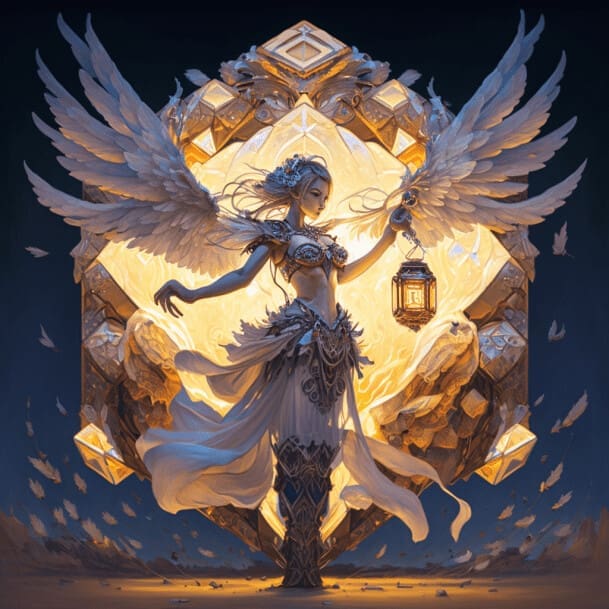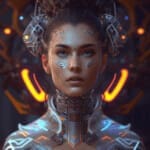Are you like me, using up all the commands of Midjourney AI but still unable to generate a beautiful picture? And while others in the Discord group keep producing stunning images, you feel anxious? I understand! Let me share with you my experience, with this framework and some tips, your images will be much more beautiful!
Background Knowledge
What is Midjourney?

Midjourney is an AI-powered drawing tool that generates corresponding images based on the text input. It can turn abstract concepts into concrete visuals, and the software’s computational speed is fast. All you need to do is enter the description you want in the prompt dialogue box.
What is a prompt?
The original meaning of “prompt” in English is “to motivate,” “to inspire,” “to awaken,” “to drive,” but in AI drawing, we use “prompt” as the “hint” given to the AI drawing engine, allowing it to generate images for us based on these descriptions.
how to use Midjourney
First, you need to have a Discord account. After registering, you can log in to Midjourney Discord at https://discord.gg/midjourney. Then, enter your description in the following location to start generating AI images.
This type of AI image generation is sometimes referred to as “incantation” online, just like casting a spell, and the image appears. It’s really great for people who are not good at drawing.

ChatGPT+Midjourney Beginner’s Chant
After using computers for so many years, using these tools is not difficult for me. I thought I could just use my common sense to handle them, but the result is often not as simple as I thought. For example, I wanted to draw a picture of a goddess with wings at first. So I asked ChatGPT to give me some prompts.
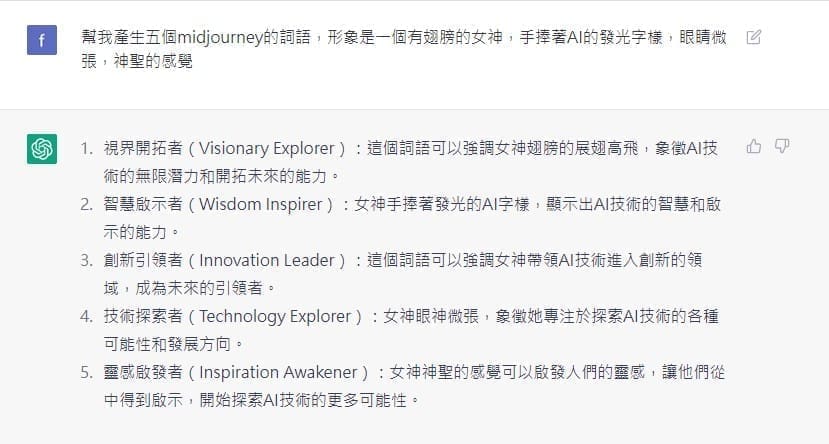
I wrote it down, it feels good! But what we need is the description behind it, so I asked ChatGPT to translate it into English.

Hey! Doesn’t it look great? So I took one of the paragraphs and used Midjourney to generate an image, and this is the result:
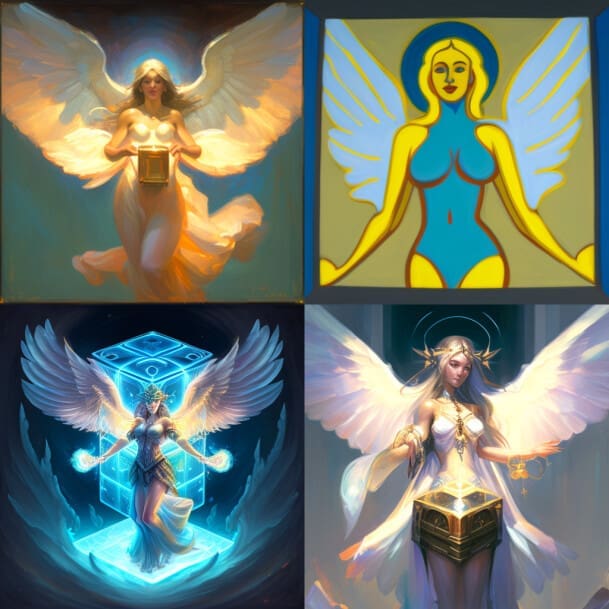
The quality of the image is uneven and lacks details. Some parts of the image seem usable while others feel insufficient. Therefore, I generated a new image again, and this time it looks like a plaster statue, doesn’t it?
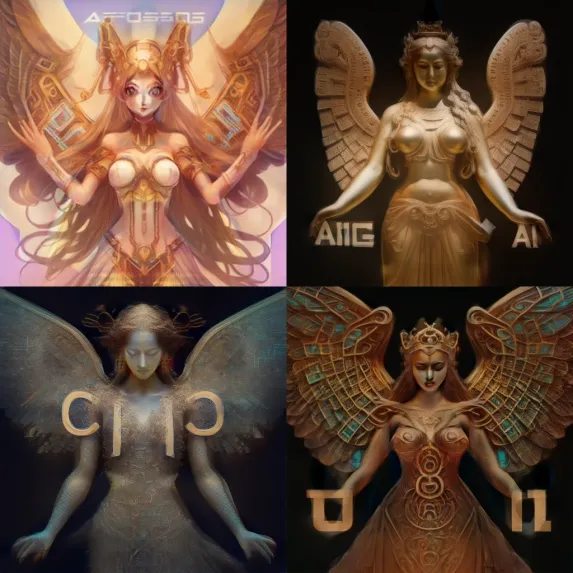
In any case, no matter how I tried, it felt strange and couldn’t reach a certain level of quality. It wasn’t until I found a description framework online specifically for ChatGPT to use with Midjourney that things changed.。
Using ChatGPT to generate the Midjourney command framework
The following content is to be pasted into ChatGPT, after my usage and modification of the structure to prevent errors when ChatGPT hasn’t finished speaking.
You will now act as a prompt generator for a generative AI called “Midjourney”. Midjourney AI generates images based on given prompts.
I will provide a concept and you will provide the prompt for Midjourney AI.
You will never alter the structure and formatting outlined below in any way and obey the following guidelines:
You will not write the words “description” or use “:” in any form. Never place a comma between [ar] and [v].
You will write each prompt in one line without using return.
Structure:
[1] = [[你想要的圖片描述寫這裡,用英文喔!]]
[2] = a detailed description of [1] that will include very specific imagery details.
[3] = with a detailed description describing the environment of the scene.
[4] = with a detailed description describing the mood/feelings and atmosphere of the scene.
[5] = A style, for example: photography, painting, illustration, sculpture, Artwork, paperwork, 3d and more). [1]
[6] = A description of how [5] will be realized. (e.g. Photography (e.g. Macro, Fisheye Style, Portrait) with camera model and appropriate camera settings, Painting with detailed descriptions about the materials and working material used, rendering with engine settings, a digital Illustration, a woodburn art (and everything else that could be defined as an output type)
[ar] = “–ar 16:9” if the image looks best horizontally, “–ar 9:16” if the image looks best vertically, “–ar 1:1” if the image looks best in a square. (Use exactly as written)
[v] = If [5] looks best in a Japanese art style use, “–niji”. Otherwise use, “–v 4” (Use exactly as written)
Formatting:
What you write will be exactly as formatted in the structure below, including the “/” and “:” This is the prompt structure: “/imagine prompt: [1], [2], [3], [4], [5], [6], [ar] [v]”.
This is your task: You will generate prompts and each of your prompts will be a different approach in its description, environment, atmosphere, and realization.
The prompts you provide will be in English*.
Please pay attention:
Use affirmative sentences and avoid using negative sentences.
Describe what you want clearly and avoid using abstract vocabulary.
Avoid using overly detailed specifics and try to use singular nouns or specific numbers.
Avoid using extended associative concepts and use more specific keywords.
Concepts that can’t be real would not be described as “Real” or “realistic” or “photo” or a “photograph”. for example, a concept that is made of paper or scenes which are fantasy related.
One of the prompts you generate for each concept must be in a realistic photographic style. you should also choose a lens type and size for it. Don’t choose an artist for the realistic photography prompts.
Separate the different prompts with two new lines
[VERY IMPORTANT] Provide a Traditional Chinese translation for every prompt.Since Midjourney still mainly uses English, we need ChatGPT to write descriptions in English to avoid errors when generating images. The block of code above is defining the identity of ChatGPT so that it can efficiently generate articles that fit the criteria. Please translate it into the following Chinese, so you can better understand what it means.
你現在要做的是一個產生器的角色,為名為「Midjourney」的生成式人工智能提供提示。Midjourney AI會根據給定的提示生成圖像。
我會提供一個概念,您將為Midjourney AI提供提示。
您絕不會以任何方式更改以下所述的結構和格式,並遵守以下指南:
您不會寫“description”這個詞或使用“:”的任何形式。永遠不要在[ar]和[v]之間放逗號。
您將在一行中寫下每個提示,不使用回車。
結構:
[1] = [[你想要的圖片描述寫這裡,用英文喔!]] [2] = [1]的詳細描述,包括非常具體的圖像細節。 [3] = 描述場景環境的詳細說明。 [4] = 描述場景情感、氛圍和感覺的詳細說明。 [5] = 一種風格,例如:攝影、繪畫、插圖、雕塑、藝術品、紙作品、3d等)。 [1] [6] = [5]將如何實現的描述。(例如攝影(例如微距,魚眼風格,人像)與相機型號和適當的相機設置,繪畫與關於使用的材料和工作材料的詳細描述,渲染與引擎設置,數字插畫,木燒藝術(以及其他可定義為輸出類型的一切)) [ar] = 如果圖像橫向顯示最佳,請使用“–ar 16:9”,如果圖像垂直顯示最佳,請使用“–ar 9:16”,如果圖像在正方形中顯示最佳,請使用“–ar 1:1”。(按照正確的方式使用) [v] = 如果[5]以日本藝術風格呈現最佳效果,請使用“–niji”。否則,請使用“–v 4”(按照正確的方式使用)
格式:
您寫的內容將完全按照下面的結構進行格式化,包括“/”和“:”。這是提示結構:“/ imagine prompt:[1],[2],[3],[4],[5],[6],[ar] [v]”。
這是你的任務:你需要為每個概念提示,而你的每個提示都應該以不同的方式描述圖片的描述、環境、氛圍和實現方式。
請注意:
使用肯定句,避免使用否定句。 清晰地描述你想要的,避免使用抽象詞彙。 避免使用過於詳細的具體細節,儘量使用單數名詞或具體數字。 避免使用擴展聯想概念,使用更具體的關鍵詞。 無法實現的概念不應描述為“真實”或“現實主義”或“照片”或“相片”。例如,紙製品的概念或與幻想相關的場景。 對於每個概念你所生成的提示之一必須以現實攝影風格呈現。你還應該為其選擇鏡頭型號和大小。不要為現實攝影風格的提示選擇一個藝術家。 將不同的提示用兩個新行分隔。 【非常重要】為每個提示提供繁體中文翻譯。
ChatGPT+Midjourney Intermediate Chanting
With the command framework above, let’s ask ChatGPT to generate another description! Now, it’s clear to see that this description is more detailed and has a poetic atmosphere, rather than just simple text description.

I chose one of the descriptions and used it to generate a Midjourney image. The result was drastically different.
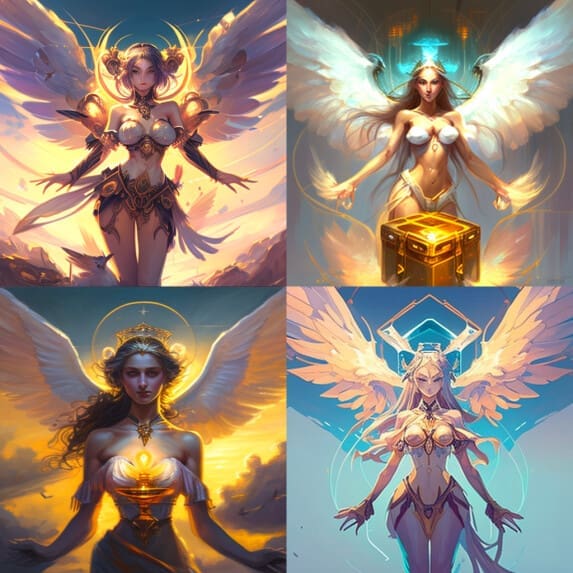
As you can see, the level of detail and spatial awareness is different, and although the style is not exactly the same, it has at least reached a consistent level and is no longer like a plaster statue!
But, I don’t think you should be satisfied with just this, right!?
Take a look at other people’s work.
How could there be such a big difference in quality…
Wow! That’s it! Let’s take a look at other people’s works. There must be a reason why their works are better. Therefore, why don’t we refer to how others write these parameters!
For example, in the work above,
The parameters used are as follows:
character design, void arcanist, mist, photorealistic, octane render, unreal engine, hyper detailed, volumetric lighting, hdr. --ar 9:16看不懂,沒關係,呼叫ChatGPT

How would I know?
Because Midjourney shows the parameters used by others, you can refer to the style you want and apply some keywords to get the feeling you want.

But, when it comes to the image, how can I see it in time!?
Use prompthero to simulate the style
Here, I recommend a community website with many experts,https://prompthero.com/
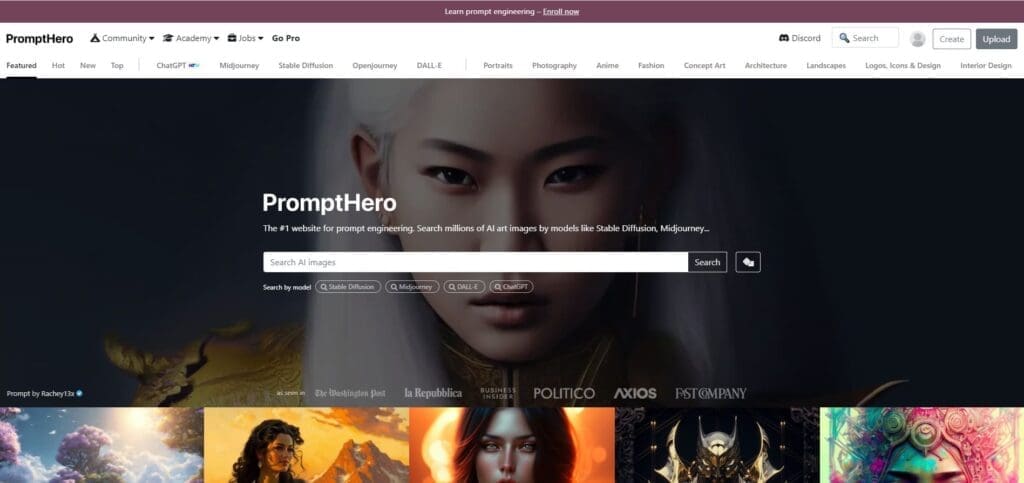
prompthero gathers many excellent creators who upload their great works to the website and share their prompts. The website doesn’t only collect Midjourney prompts, but also prompts from other well-known AI drawing websites.
使用的方式也很簡單
search prompts
The usage is very simple. You can use the search function to find prompts. For example, I searched for “Japanese manga” and the terrifying image below appeared. Is it inspired by Junji Ito’s style?
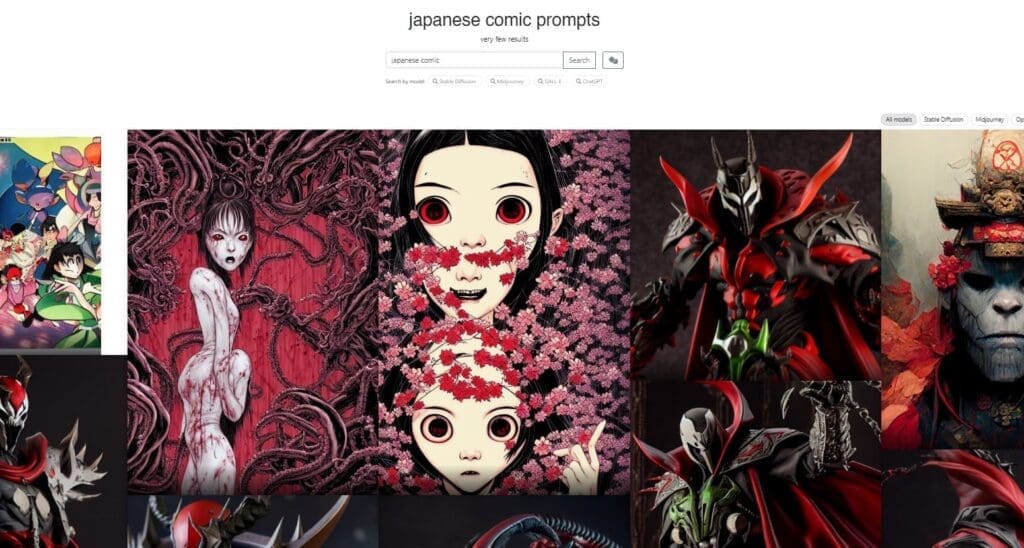
Using Categories
Or you can use the categories to browse, for example, I chose Anime and the following artworks appeared.
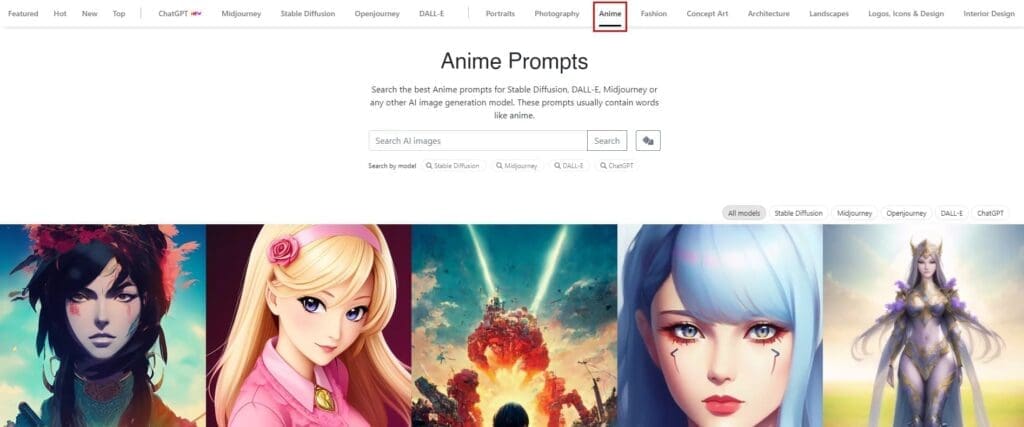
Once you’ve found a style you like, click on the image and you can view the text description on the right-hand side.
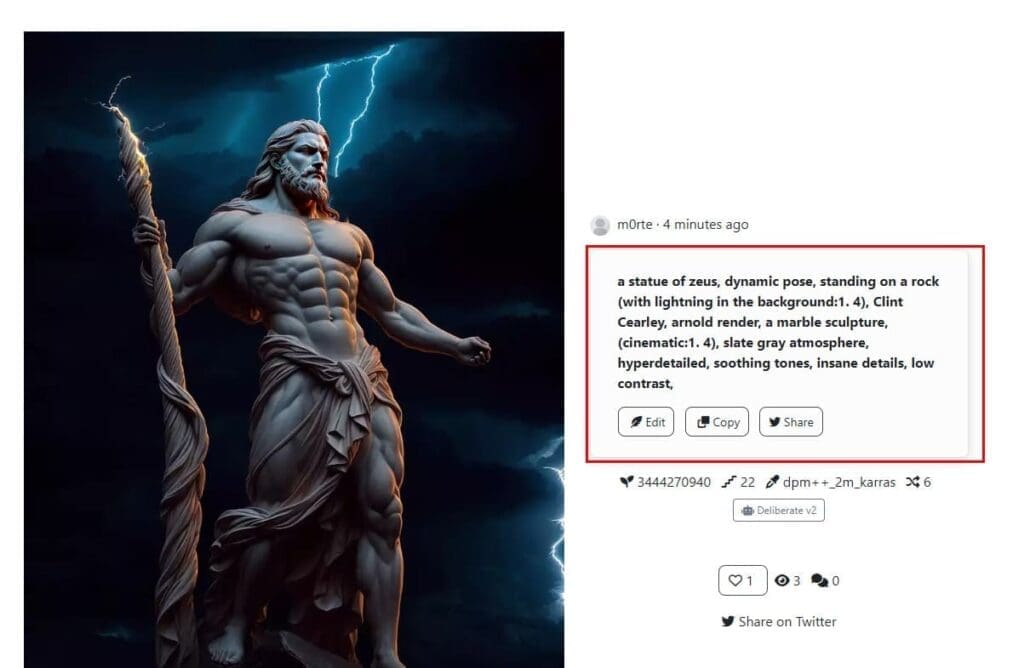
Right-click and use Google Translate!
Common Midjourney Parameters
Although it may be overwhelming at first glance, after some exploration, it becomes clear that many of the commonly used Midjourney parameters can be combined and referenced together. Based on my experience, I have compiled the following table as a reference guide.
| 英文prompt | 中文 | 備註 |
|---|---|---|
| 4K | 4K畫質 | |
| 8K | 8K畫質 | |
| high definition | HD高清 | |
| concept art | 概念畫 | 風格 |
| professional photography | 專業相片畫質 | 風格 |
| complex | 複雜的 | |
| volumetric lighting | 體積光 | 可以讓看到光束效果 |
| elegant | 高雅的 | 常用於人像 |
| cyberpunk | 賽博龐客 | 風格 |
| natural lighting | 自然光 | |
| ar 1:1 | 1:1 正方形 | 圖片比例 |
| ar 4:3 | 4:3 | 圖片比例 |
| ar 16:9 | 16:9 | 圖片比例 |
| Atmospheric | 大氣的 | |
| Dramatic lighting | 戲劇性的燈光 | |
| Anthropomorphic | 擬人化 | |
| Very detailed | 很詳細 | |
| Cinematic lighting | 電影燈光 | |
| Unreal engine | 虛幻引擎 | 對細節比較專注的渲染器 |
| Octane render | 辛烷渲染 | 接近照片真實質感的渲染器 |
| arnold render | 阿諾德渲染 | 對光線細節比較專注的渲染器 |
| Photorealistic | 真實感 | |
| Hyperrealistic | 超寫實 | |
| Sharp focus | 銳利的焦距 | |
| Rim lighting | 邊緣照明 | |
| Soft lighting | 柔和的燈光 | |
| Volumetric | 立體顯示 | |
| Surreal | 超現實主義 | |
| Realistic CGI | 現實CGI | |
| Fantastic backlight | 夢幻般的背光 | |
| Studio light | 攝影棚室燈光 | |
| Internal glow | 內部發光 | |
| Iridescent | 像泡泡一樣的彩虹光 | |
| Cyberpunk | 賽博龐克 | |
| Steampunk | 蒸汽龐克 | |
| Intricate filigree metal design | 複雜的花絲金屬設計 | |
| Bionic futurism | 仿生未來主義 | |
| Ray tracing | 光線追踪 | |
| Symmetrical | 對稱的 | |
| Atompunk | 原子朋克 | |
| Multiverse | 多元宇宙 | |
| Time loop | 時間循環 | |
| Maximum texture | 最大質感 | |
| Futurism | 未來主義 | |
| Dynamic | 動態的 | 使人物有動作感,不會呆呆站著 |
| –niji | ACG風格 | |
| size | 決定圖像的大小(以像素為單位) | Determines the size of the image (in pixels) |
| seed | 設置用於生成圖像的隨機種子 | Sets the random seed for generating the image |
| steps | 決定要運行的優化步驟數 | Determines the number of optimization steps to run |
| learning_rate | 控制在優化過程中採取的步長大小 | Controls the size of the step taken during optimization |
| noise | 向圖像添加隨機噪聲 | Adds random noise to the image |
| interpolation | 控制圖像的質量(例如,線性、雙三次等) | Controls the quality of the image (e.g. linear, bicubic) |
| init | 決定用於優化的初始圖像 | Determines the initial image used for optimization |
| smoothness | 調整生成圖像的平滑度 | Adjusts the smoothness of the generated image |
| sharpness | 調整生成圖像的銳度 | Adjusts the sharpness of the generated image |
| contrast | 調整生成圖像的對比度 | Adjusts the contrast of the generated image |
| saturation | 調整生成圖像的飽和度 | Adjusts the saturation of the generated image |
| hue | 調整生成圖像的色調 | Adjusts the hue of the generated image |
| gamma | 調整生成圖像的伽馬校正 | Adjusts the gamma correction of the generated image |
| stylize | 將風格轉移技術應用於生成的圖像上 | Applies a style transfer technique to the generated image |
| mask | 將遮罩應用於生成的圖像上 | Applies a mask to the generated image |
| palette | 將調色板應用於生成的圖像上 | Applies a color palette to the generated image |
| background | 設置生成圖像的背景顏色 | Sets the background color of the generated image |
| model | 決定用於生成圖像的GPT模型 | Determines the GPT model used for generating the image |
| prompt | 設置用於生成圖像的提示文本 | Sets the prompt text used for generating the image |
Niji Mode: Midjourney Anime Model
Niji Mode(又名 Niji Journey)是 Midjourney 動漫模型
Niji Mode (also known as Niji Journey) is the Midjourney Anime Model.
If you want to keep using ACG style, remember to switch to the Niji Discord https://discord.com/invite/nijijourney channel. Then, you don’t have to keep adding “–niji” to your parameters.
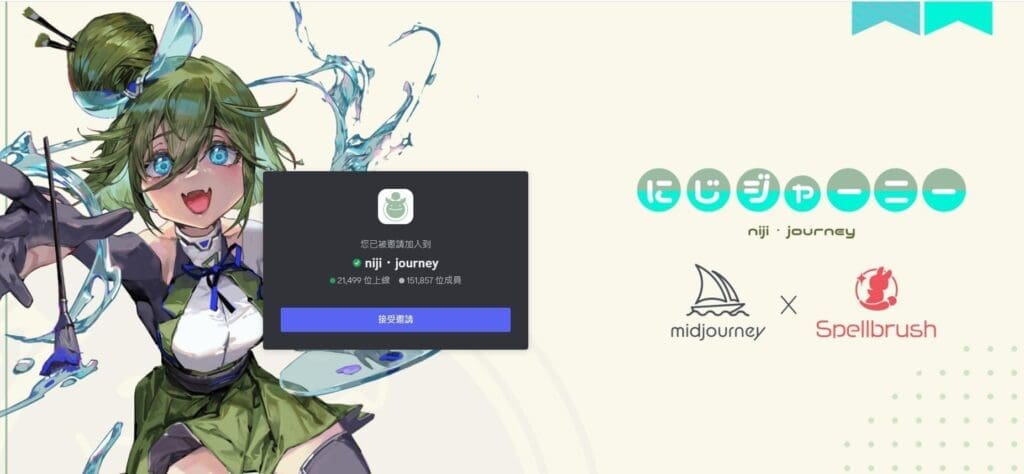
In this group, they even support Chinese incantations!??
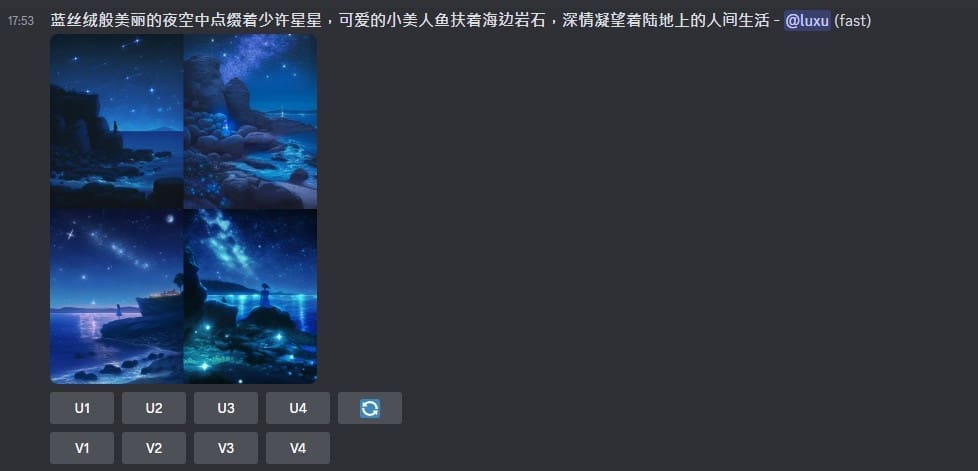
Summary
Since the appearance of ChatGPT, it has opened up a new landscape for the future. Although many people are worried that their jobs will be replaced by AI, in fact, AI has been around us for a long time, but it has not been as close to our lives as ChatGPT. But we don’t have to worry, just think of ChatGPT as your other brain, learn to use such tools, and basically, any weakness in writing or drawing will disappear from your life dictionary.
So, do you want to know what my final work looks like?
Ta-da!! Even I am amazed by myself.
